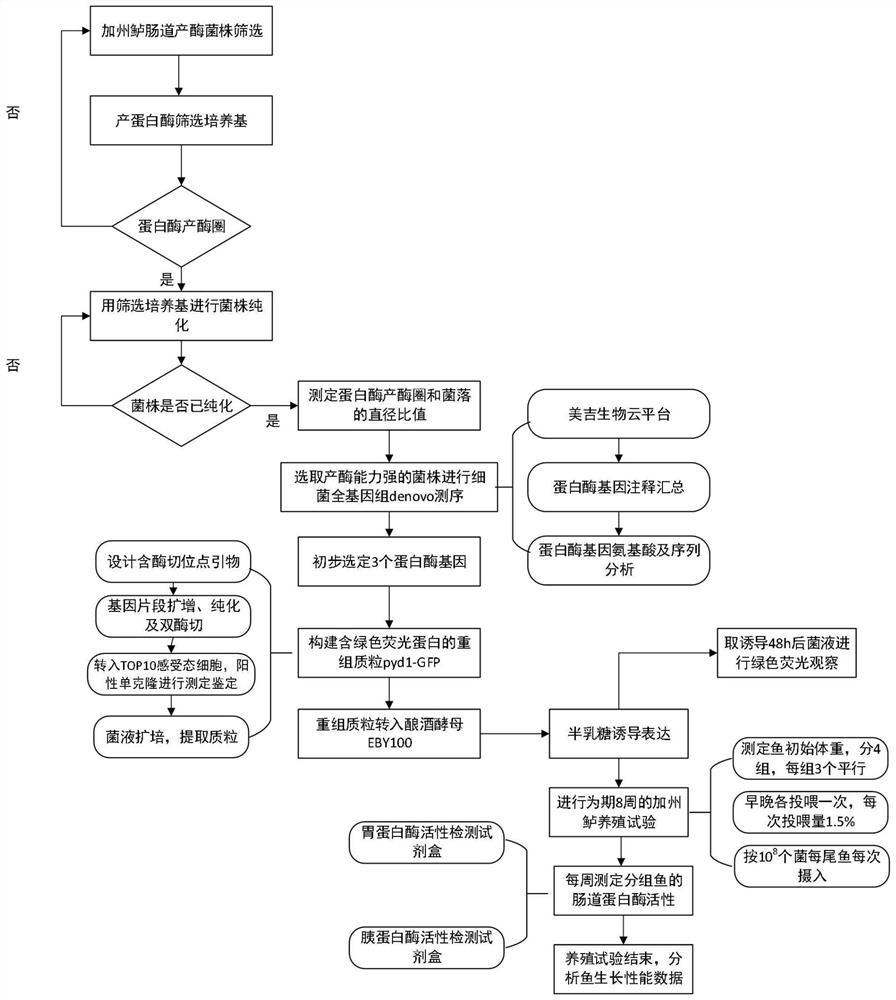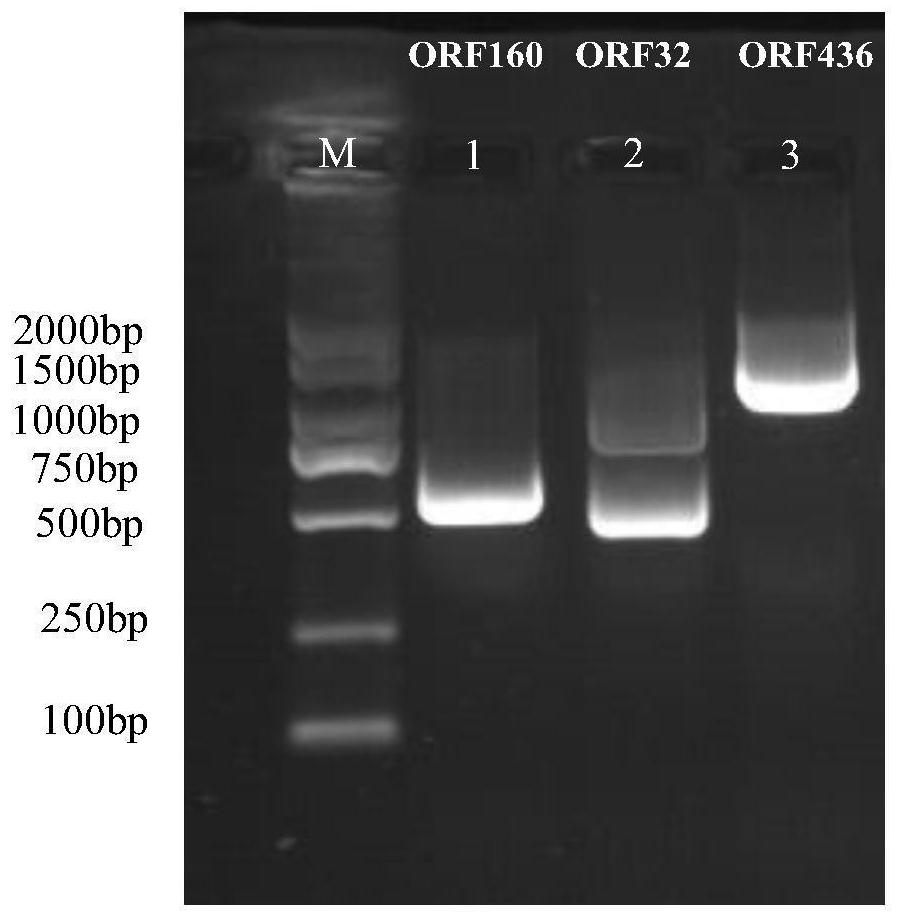Fish-derived protease gene and application thereof
A protease and fish-derived technology, applied in the fields of application, genetic engineering, plant genetic improvement, etc., can solve the problems of large-scale cultivation of bacteriophages and viruses, achieve promising prospects, promote digestion and absorption, increase weight gain rate and specific growth rate effect
- Summary
- Abstract
- Description
- Claims
- Application Information
AI Technical Summary
Problems solved by technology
Method used
Image
Examples
Embodiment 1
[0045] Example 1 Screening of fish-derived protease-producing strains, screening of protease-producing genes and construction of recombinant plasmids
[0046] This embodiment includes: screening protease-producing strains from the intestinal tract of California perch, then analyzing and screening protease-producing genes from the strains, and constructing recombinant plasmids comprising the screened protease-producing genes, specifically including the following steps:
[0047] (1), screening of protease-producing strains
[0048] Screening of solid medium (recipe: peptone 1g / 100mL, yeast extract 0.5g / mL, sodium chloride 1g / mL, technical agar powder 1.5g / 100mL, skimmed milk powder 1g / 100mL, pH7.2) by protease screening The intestinal strain of California perch was screened to observe whether there was a transparent enzyme-producing circle around the colony. If there is a transparent enzyme-producing circle to appear, it indicates that it is a protease-producing bacterial strai...
Embodiment 2
[0100] Example 2 Effects of Three Yeast Recombinant Expression Vectors Containing Recombinant Plasmids on the Growth Performance of Farmed Fish
[0101] This embodiment uses the three yeast recombinant expression vectors containing recombinant plasmids of Example 1 to test, specifically including the following steps:
[0102] 1. Test groups
[0103] A large blue tank containing 400L water (average water temperature 26°C-28°C) was used to carry out the California perch animal experiment. Three experimental groups and one control group were set up, with 90 fish in each group, and a total of 3 parallel fish were set up, that is, 30 fish in each parallel. Fish, with control group 1, control group 2, control group 3, experiment group 1 (ORF32-1, ORF32-2, ORF32-3), experiment group 2 (ORF436-1, ORF436-2, ORF436 respectively) in the following examples -3) and experimental group 3 (ORF160-1, ORF160-2, ORF160-3).
[0104] 2. Yeast count and bacterial quantity setting
[0105] After ...
Embodiment 3
[0127] Example 3 Effects of Three Yeast Recombinant Expression Vectors Containing Recombinant Plasmids on Fish Protease Activity
[0128] The grouping and feeding methods of Example 2 were used to culture California perch. After 28 days, the intestinal tissues of 3 fish were taken in parallel in each group, and the mixed sample homogenate was diluted 5 times, and then the enzyme activity was measured. The pepsin activity of each group of fish was measured by Solarbio pepsin activity detection kit (article number: BC2325 specification: 100T / 48S), and the activity of each group of fish was measured by Solarbio trypsin activity detection kit (article number: BC2315 specification: 100T / 96S). Trypsin activity. For the enzyme activity determination operation steps and the enzyme activity calculation formula, refer to the kit instructions.
[0129] 1. After 28 days of breeding, detection of pepsin activity in the intestinal tract of California sea bass (pepsin kit)
[0130] Enzyme ...
PUM
 Login to View More
Login to View More Abstract
Description
Claims
Application Information
 Login to View More
Login to View More - Generate Ideas
- Intellectual Property
- Life Sciences
- Materials
- Tech Scout
- Unparalleled Data Quality
- Higher Quality Content
- 60% Fewer Hallucinations
Browse by: Latest US Patents, China's latest patents, Technical Efficacy Thesaurus, Application Domain, Technology Topic, Popular Technical Reports.
© 2025 PatSnap. All rights reserved.Legal|Privacy policy|Modern Slavery Act Transparency Statement|Sitemap|About US| Contact US: help@patsnap.com



